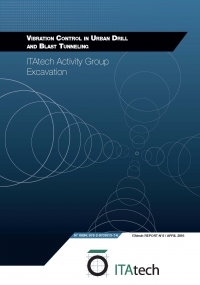Blasting is an integral part of the excavation process in underground construction and civil engineering.
Due to the high energy content of explosives it is an inexpensive and highly effective method for rock
breaking. As explosives have continually been developing due to a high level of research, they have
also become remarkably safer. However, it would be careless to ignore the negative side-effects of
blasting operations. Due to urbanization, blasting operations are executed more often in populous
areas. For this reason it is important to perform the blasting works so that the possible effects on
the environment and people nearby are minimized. One of the inevitable negative side-effects of
excavation with blasting is blasting-induced vibrations.
The aim of this paper is to discuss the general aspects of blast vibrations and it should give an
overview of the blast vibration regulations and legislations in Europe. Furthermore, this paper should
also outline modern methods which can be used to efficiently reduce blast vibrations. The first
method which is discussed, is improving the delay design by using non-electric detonators. With
these detonators, it is possible to set up an efficient system of detonators with a large number of
delay times. The paper also treats the importance of the drilling accuracy and choosing the right
explosive type. The last method which is shown is the vibration isolation of sensitive equipment. This
method is easy to implement and very useful in urban drill and blast tunneling.
